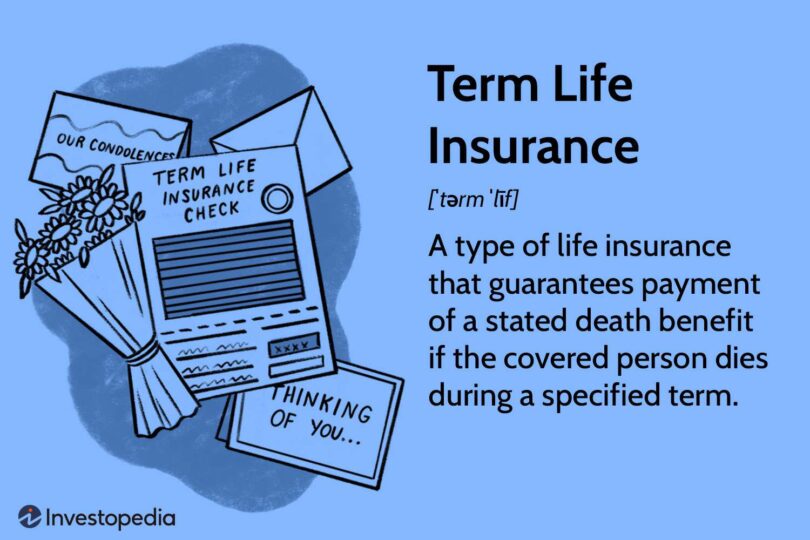Advertisements
When it comes to planning for your family’s future, life insurance plays a critical role. Among the many options available, term life insurance stands out as one of the most affordable and straightforward ways to provide financial security. Designed to offer coverage for a specific period, term life insurance delivers essential protection without the complexity or high cost of permanent life policies.
Whether you’re a young professional, a new parent, or planning for retirement, this article will help you understand the benefits, features, and considerations of term life insurance—so you can make an informed decision.
What Is Term Life Insurance?
Term life insurance is a policy that provides a guaranteed death benefit to your beneficiaries if you pass away within a specified term—typically 10, 20, or 30 years. If you outlive the policy term, the coverage ends unless it’s renewed or converted.
Unlike whole or universal life insurance, term policies do not include a cash value component. This makes them significantly more affordable and ideal for covering temporary financial responsibilities, such as:
- Mortgage payments
- Income replacement
- Children’s education costs
- Outstanding debts
- Funeral expenses
Key Benefits of Term Life Insurance
1. Affordable Premiums
Term life insurance is known for its low monthly premiums, especially when purchased at a younger age or in good health. This allows policyholders to obtain higher coverage amounts at a fraction of the cost of permanent life insurance.
Advertisements
2. Simplicity and Transparency
Term life insurance is easy to understand. You choose the coverage amount and duration, pay fixed premiums, and your loved ones receive a death benefit if you die during the term.
3. Flexible Coverage Periods
Most providers offer 10-, 15-, 20-, 25-, and 30-year term options. This allows you to align your policy with financial milestones such as paying off a mortgage or raising children.
4. Convertibility Options
Some policies offer a conversion feature, allowing you to switch to a permanent life insurance policy without a medical exam if your needs change during the term.
How Term Life Insurance Works
- Choose a Coverage Amount and Term
Determine how much your family would need if you were no longer there to provide income. Consider living expenses, debts, tuition, and final costs. - Apply and Undergo Underwriting
Most insurers require a medical exam and health questionnaire to assess risk and set your premium. - Pay Fixed Premiums
Once approved, you’ll pay a consistent premium throughout the policy term. - Payout Upon Death
If you pass away during the term, your beneficiary receives a tax-free lump sum death benefit to use as needed. - Policy Expiration or Renewal
If the policy expires and you’re still living, you can either let it lapse, renew it annually (often at higher rates), or convert it if your policy allows.
High-CPC Keywords Included in This Article
To maximize visibility and potential ad revenue, this article is optimized for high-cost-per-click (CPC) keywords such as:
- Best term life insurance rates
- Affordable term life insurance policies
- Compare term life insurance quotes
- 20-year term life insurance plans
- Term life insurance vs whole life
- How much term life insurance do I need?
- No exam term life insurance
Who Should Consider Term Life Insurance?
Young Families
Parents often purchase term life insurance to ensure their children are financially supported until adulthood.
Homeowners
Term policies can cover mortgage payments so loved ones aren’t burdened with home-related debt.
Business Owners
Key-person or partnership coverage can protect a business from financial strain after the loss of a crucial member.
Single Income Households
Term life helps protect the financial well-being of dependents when one person provides the majority of household income.
How to Choose the Right Term Life Insurance Policy
1. Assess Your Financial Obligations
Use a life insurance calculator to estimate how much coverage you need based on income, debt, and long-term goals.
2. Compare Providers and Quotes
Use trusted platforms like Policygenius, NerdWallet, or SelectQuote to compare premiums, coverage, and conversion options from top insurers.
3. Check Policy Riders
Some term life policies offer optional riders such as:
- Waiver of premium
- Accelerated death benefit
- Return of premium
- Child term rider
4. Review Company Ratings
Choose a provider with strong financial ratings (A.M. Best, Moody’s, or Standard & Poor’s) and positive customer reviews.
Conclusion
Term life insurance is one of the most practical and cost-effective ways to protect your family’s future. With fixed premiums, flexible terms, and high coverage limits, it provides peace of mind that your loved ones will be financially secure in the event of the unexpected.
Whether you’re seeking to cover major life expenses, secure your children’s education, or protect your mortgage, a well-structured term life insurance policy ensures that your protection plan is affordable, reliable, and aligned with your goals.
Start by comparing quotes today and take the first step toward building a strong financial safety net for the people who matter most.
Would you like help calculating your coverage needs or comparing top-rated term life insurance providers? I can guide you through the process.
Advertisements






